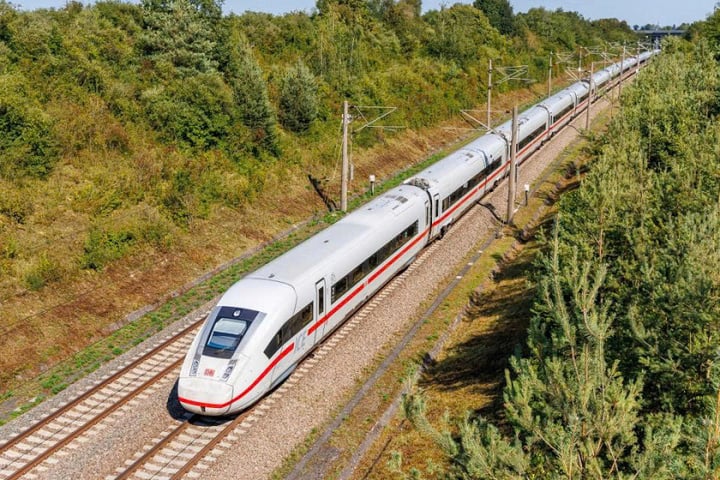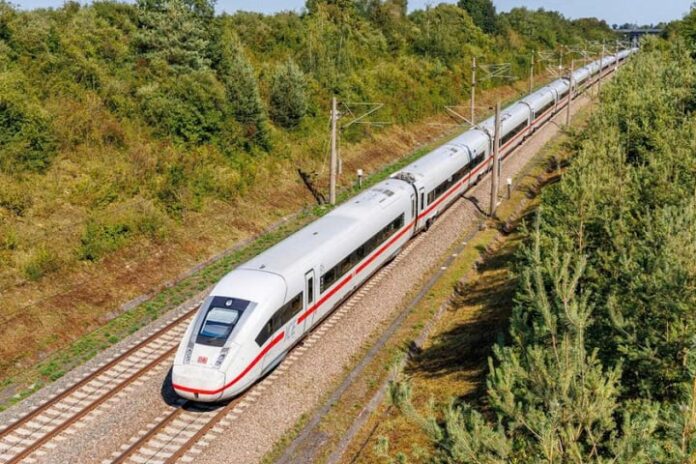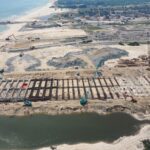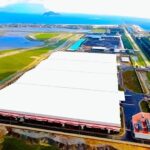Last week, public opinion was stirred by a private enterprise’s bold proposal to build a high-speed North-South railway. While there were mixed reactions to this audacious suggestion, little attention was paid to the commitment VinSpeed made towards developing a high-speed railway industry.
In reality, this industry acts as a catalyst for a country’s economic and industrial advancement, yet it remains untapped in Vietnam.

High-speed railways are a catalytic industry for a country’s economic and industrial development, but it remains an untapped opportunity in Vietnam.
High-Speed Railway Industry – A Technological Launchpad for the Nation
Unlike traditional infrastructure projects, high-speed railways (HSR) are a culmination of cutting-edge technologies and require a closed-loop industrial ecosystem. The HSR industry is a multi-layered conglomerate, integrating hundreds of advanced technologies with strong spillover effects on various economic sectors.
PGS.TS Nguyen Huu Duc, from the Technical University of Berlin, Germany, affirms that the HSR industry epitomizes modern industry, alongside automotive and aerospace manufacturing. A nation that masters this industry has ascended to a new level of development. HSR production demands precise mechanical engineering. Each high-speed train consists of dozens of carriages, thousands of intricate components, and details—from lightweight body materials, electro-pneumatic braking systems, to anti-vibration steering gear, traction motors, automatic control systems, speed sensors, and countless advanced materials—ensure safe operation at high speeds.
According to the expert, each carriage requires hundreds, if not thousands, of mechanical, electronic, and automated parts, most of which must be manufactured with near-perfect accuracy.
Moreover, the HSR industry is a melting pot of digital technologies. From central control and journey management to artificial intelligence (AI), big data, and cloud computing, these technologies are integrated to optimize operations and enhance user experiences.
Developing the HSR industry not only creates hundreds of thousands of direct and indirect jobs but also fosters innovation, technology transfer, and labor productivity improvements. According to TS Mai Van Sinh, an industrial policy expert, one of the direct beneficiaries of the HSR industry is the tourism sector.
“In Japan, domestic tourism revenue surged due to the Shinkansen lines,” TS Sinh noted. This is also why countries like Japan, France, Germany, China, and South Korea have long considered HSR development a national strategy.
Particularly in Vietnam, there is immense potential for the HSR industry. Besides a large population, the country boasts developing economic corridors between regions. In addition to the North-South axis, there are other vital routes, such as the Central Highlands – Central Coast, Ho Chi Minh City – Can Tho – Ca Mau, and Hanoi – Hai Phong – Quang Ninh.
These corridors urgently need high-speed transport infrastructure to relieve road traffic pressure, reduce travel time, and facilitate the swift movement of goods and labor between economic hubs, setting the stage for Vietnam’s breakthrough development in the new era.
For Vietnam, this industry will reduce reliance on imported equipment, create high-value-added jobs, and enhance the endogenous capacity of the industry. According to TS Mai Van Sinh, such an industry “must be developed by setting national goals, with leading enterprises taking the helm and consistent long-term supportive policies.”
Opportunities for Establishing Vietnam’s HSR Industry
While Vietnam’s automotive industry once struggled for decades without establishing a true national brand, VinFast’s emergence laid the foundation for a modern Vietnamese automotive industry. In less than eight years, VinFast has achieved complete technology mastery, offering one of the most diverse ranges of electric vehicles in the global automotive industry, while also taking the Vietnamese brand to the global market.
A similar model could be replicated with VinSpeed, the company proposing to invest in the North-South HSR line, spanning over 1,500 kilometers. Even at the proposal stage, VinSpeed’s vision transcends a mere infrastructure project. Instead of solely importing technology, VinSpeed aims for gradual localization, from technology transfer to eventually mastering the entire HSR value chain, including train design, infrastructure construction, operation, maintenance, and talent development.
This approach necessitates the formation of a new industry, where Vietnamese enterprises not only serve as construction contractors but also engage in manufacturing high-speed train components, signaling equipment, and supplying advanced materials. When this value chain is initiated, hundreds of domestic mechanical, electronic, material, and IT enterprises will have the opportunity to upgrade their capabilities and become part of a large-scale industrial ecosystem.
PGS.TS Bui Quang Tuan, Vice President of the Vietnam Economic Science Association and former Director of the Vietnam Economics Institute, believes that VinSpeed’s significance lies not in proposing a massive infrastructure project but in its industrial vision. Just as VinFast played a pivotal role in developing Vietnam’s modern automotive industry, VinSpeed could make a similar contribution to the HSR industry.
“I believe that if approved, VinSpeed will establish a domestic industrial ecosystem around the HSR project. With HSR, the standards are exceptionally high, compelling local enterprises to innovate, upgrade, and collaborate. Failing to adapt to this pressure will keep them stuck at the low-end assembly level,” the expert asserted.
PGS. TS Bui Quang Tuan also noted that investing in high-speed railways solely for passenger transport might not immediately yield profits. However, strategically, we can witness efficient investment for the future of a new strategic industry, encompassing talent development, technology transfer, design, and advancement, “which is a worthy investment for a country’s strategic industry.”
In the past, Vietnam lagged in the industrialization race due to the absence of leading industries. Now, the opportunity has returned, this time with high-speed railways. If VinSpeed, bearing Vingroup’s “walk the talk” gene, is entrusted with this responsibility, Vietnam will not only possess a high-speed transportation network but also lay the foundation for a high-tech industry with long-term value.
Moreover, this is a crucial test: Is Vietnam ready to evolve from a technology-importing nation to a technology-creating one? The answer may begin with the first rails laid on the North-South high-speed journey.
“FECON Consortium Bags a New Contract Worth VND 1,000 Billion at My Thuy Port Project”
The My Thuy Port project is an ambitious undertaking with a total investment of approximately VND 15,000 billion. This state-of-the-art port facility will boast 10 berths, accommodating container ships, bulk carriers of up to 100,000 tons, and LNG vessels up to 150,000 tons. With this significant investment and scale, the My Thuy Port project is poised to become a pivotal maritime gateway, facilitating trade and contributing to the economic growth of the region.
The Art of Trade Negotiation: Vietnam and the US Engage in the Second Round of Reciprocal Trade Talks
On May 19th, the first day of negotiations, the Vietnamese and American delegations devoted time to discussing a comprehensive approach to address fundamental issues of mutual concern and accelerate the negotiation process.





















